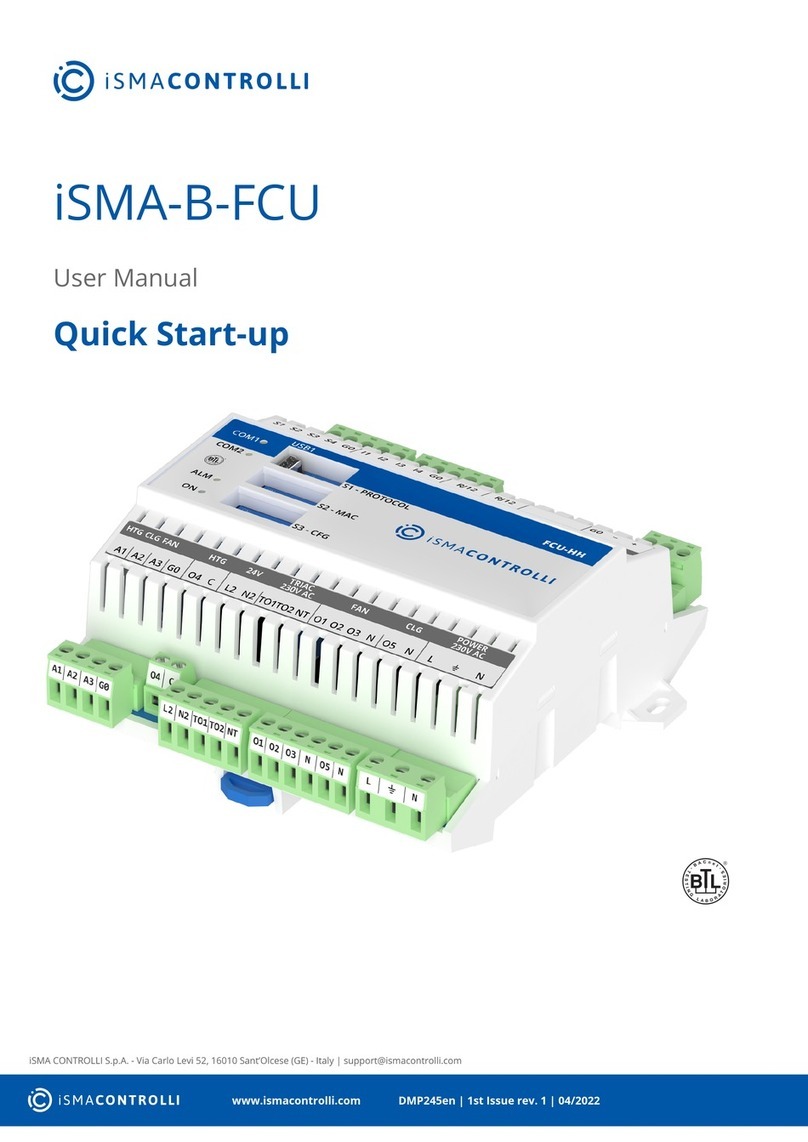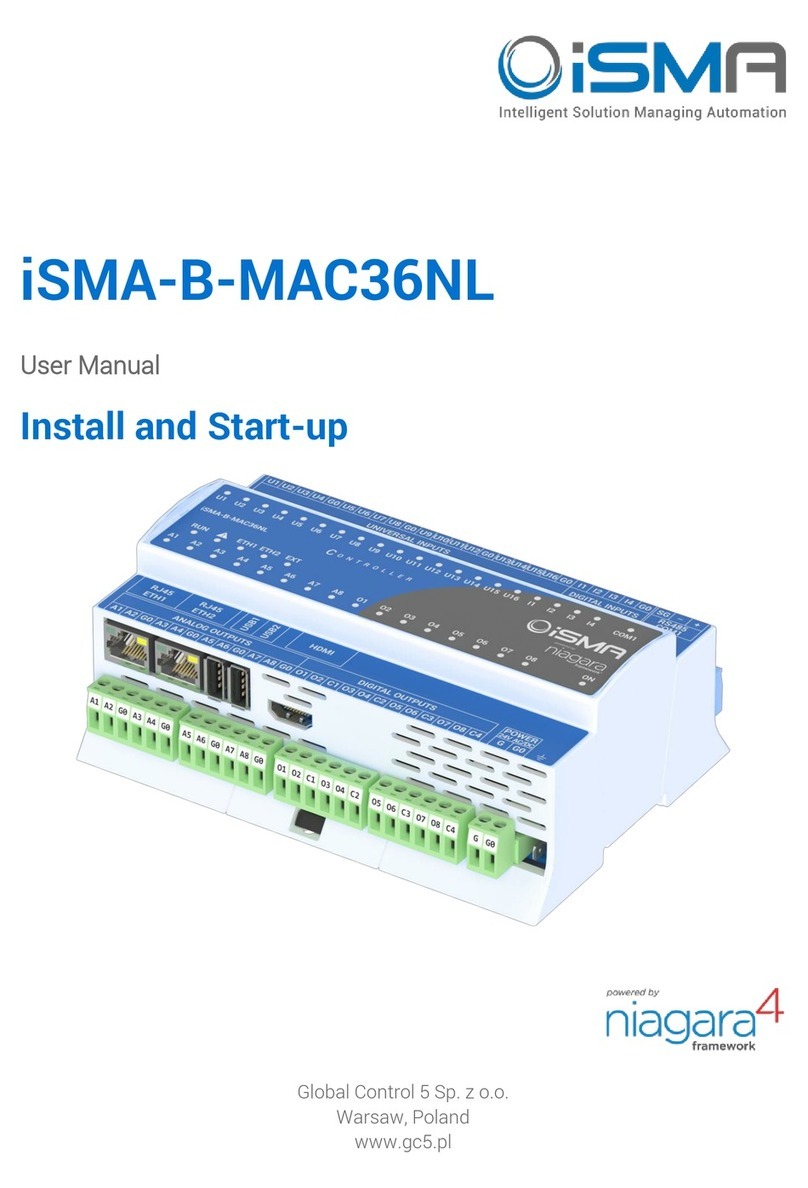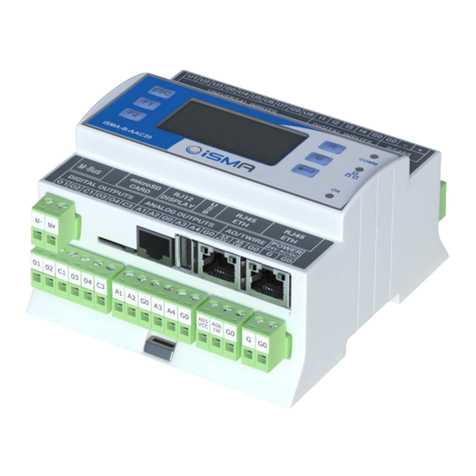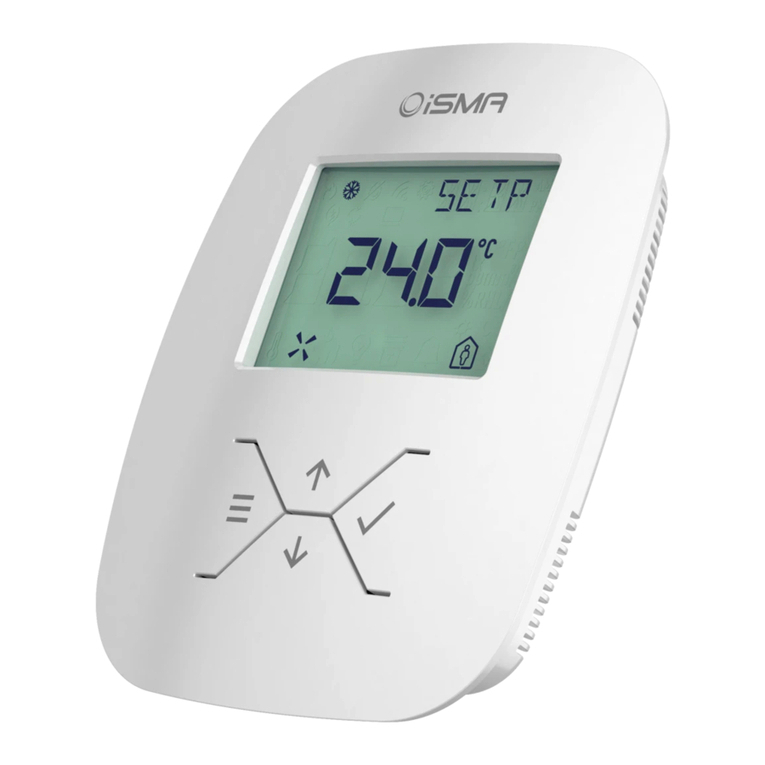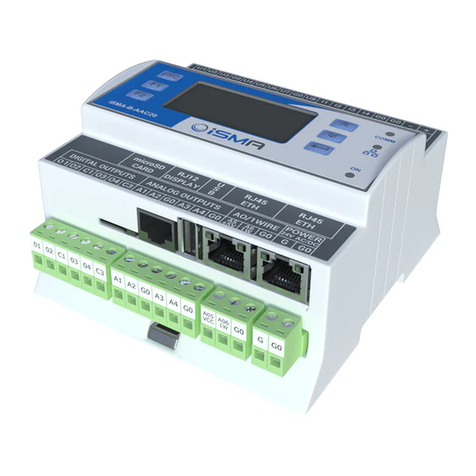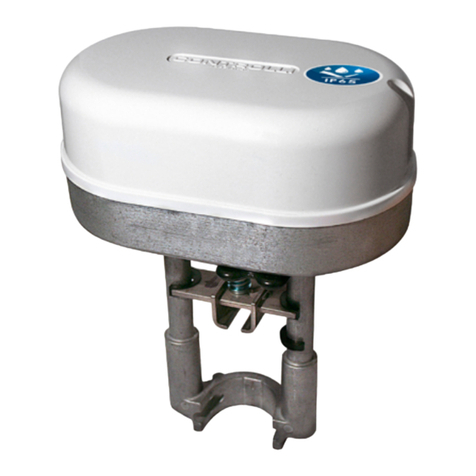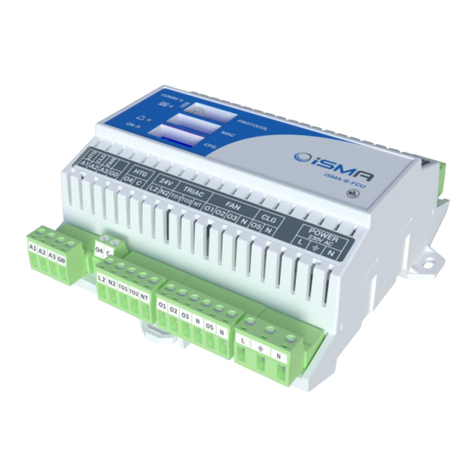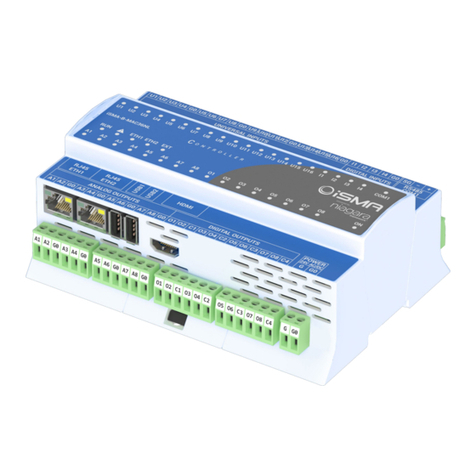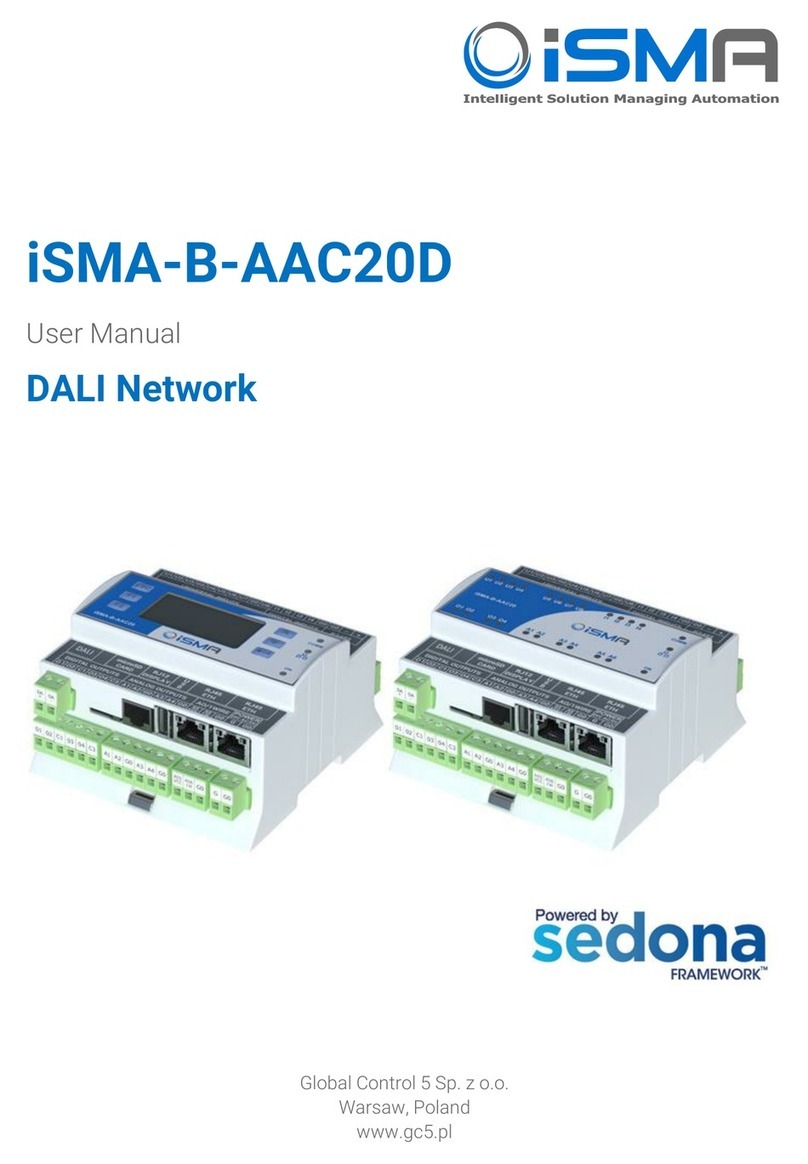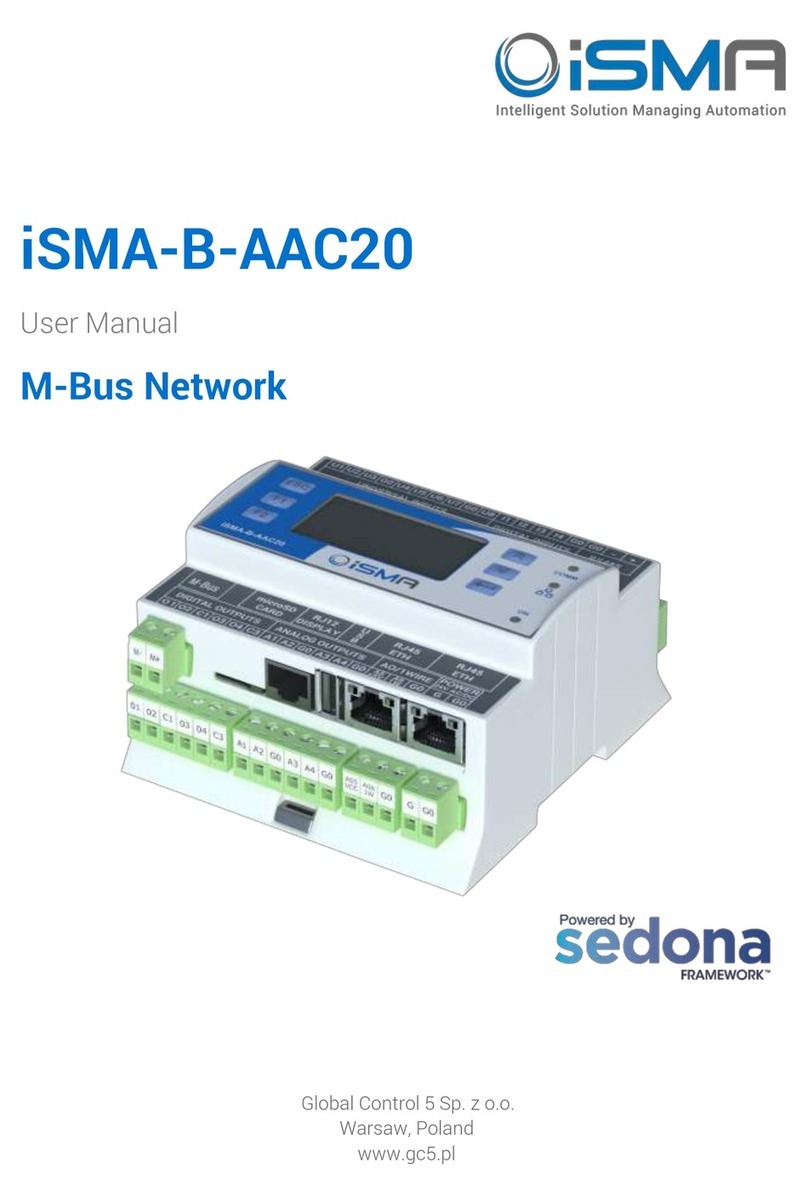iSMA-B-MAC36NL Local IO Manual
Version 1.2 www.gc5.pl Page 2 / 33
Table of Contents
1Introduction............................................................................................................................... 3
1.1 Revision History................................................................................................................ 3
1.2 Overview............................................................................................................................. 3
2Local IO Hardware Specification .......................................................................................... 4
2.1 Terminals and Internal Connection Diagram.............................................................. 4
2.2 LED Indicators................................................................................................................... 5
2.3 Universal Inputs (16x UI)................................................................................................. 5
2.3.1 Voltage Input Connection (0 –10 V DC) .............................................................. 6
2.3.2 Current Input Connection (0 –20 mA)................................................................. 6
2.3.3 Temperature Input Connection.............................................................................. 7
2.3.4 Dry Contact Input Connection (Digital Input) ...................................................... 7
2.4 Digital Inputs (4x DI) ........................................................................................................ 8
2.5 Analog Outputs (8x AO)................................................................................................... 8
2.5.1 Voltage Output Connection (0 –10 V DC) ........................................................... 8
2.5.2 Relay to Analog Output Connection ...................................................................... 9
2.6 Digital Outputs (8x DO).................................................................................................... 9
2.6.1 Resistive Load Connection...................................................................................... 9
2.6.2 Solenoid Valve Connection ..................................................................................... 9
3Local IO Driver ........................................................................................................................10
3.1 iSMA IO Network ............................................................................................................10
3.2 Local IO Device ............................................................................................................... 11
3.3 Universal Input................................................................................................................13
3.4 Digital Input .....................................................................................................................17
3.5 Digital Input Counter......................................................................................................20
3.6 Analog Output .................................................................................................................22
3.7 Digital Output ..................................................................................................................25
3.8 Rotary Switch.................................................................................................................. 29
3.9 DIP Switch........................................................................................................................31
